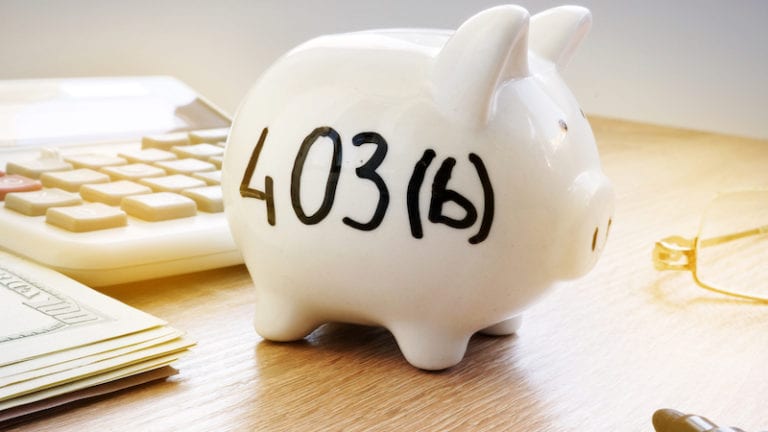A 403(b) is the staple of a teacher’s retirement savings plan—it’s common to run into a salesman in the hallway or teacher’s lounge. That’s why many teachers ask me, “Should I be using a 403(b)?”
If you’re a new teacher, the answer could be no. Here are a few reasons why.
As a new teacher, your income isn’t big enough to see a large difference.
A 403(b) is not taxable now but is taxable in the future. On the flip side, a Roth IRA is taxable now, but not in the future. If you compared saving $5,000/year in a 403(b) versus a Roth IRA, you would most likely end up with a larger overall benefit using the latter approach. The reason for this is due to your time horizon. If you’re 23 and saving until you’re 63, you have 40 years to out-earn any tax savings you encountered in using a traditional 403(b).
To answer the question, “Should I be using a 403(b)?” you’ll also want to look at your income. If you’re new to the profession, your income probably puts you in a lower tax bracket, perhaps the 15 percent bracket. When you project forward, it’s possible your pension (and Social Security if you’re eligible) will push you into a 25 percent (or higher) bracket.
In that situation, you’d pay 15 percent in taxes now with a Roth IRA or 25 percent in taxes later with a 403(b). Which would you prefer?
Compare the costs of a 403(b) to a Roth or taxable account.
If you came to me and said “I want to invest $100 per week for the rest of my career. What are my options? Should I be using a 403(b)?” Here’s what I’d tell you:
- I have one account that will save you a small amount in taxes now, but you’ll have to pay taxes later when you’re retired. Out of every $100 you invest, I’ll take $3.50 for letting you use this account.
- The other two accounts won’t save anything in taxes right now, but you’ll either pay minimal or no taxes in the future. For that one, I’ll only take 50 cents from every $100 you want to invest.
Which one sounds better to you? The first option is your typical insurance company 403(b). The second option is a Roth IRA not offered in your district or a taxable investment account. If you don’t know how to analyze the worth of a 403(b), chances are, you’re using an expensive one.
The average teacher will receive a pension in their eighth year of retirement exceeding their final year’s teaching salary.
In the current set-up of state salary and pension systems, most teachers will retire earning the highest income of their careers. While the metrics vary by state, that salary will be used to calculate the pension amount. When you take into account the annual increase in COLA (Cost of Living Adjustment), the pension of some teachers when they reach eight years into retirement can be higher than their final year’s salary. To withdraw money from an account that is fully taxable is not the best move here. And it could be avoided with some planning.
Tax diversification at retirement is REALLY important.
If you look into the future see that all of your retirement savings will be subject to income taxes, that is a concern. But that’s the situation you put yourself into when you save into a pension and traditional 403(b)—both of these are taxed as income when you get the money. By saving to a Roth account, you “diversify the tax buckets” your accounts fall into. This provides a more flexible tax situation in retirement.

